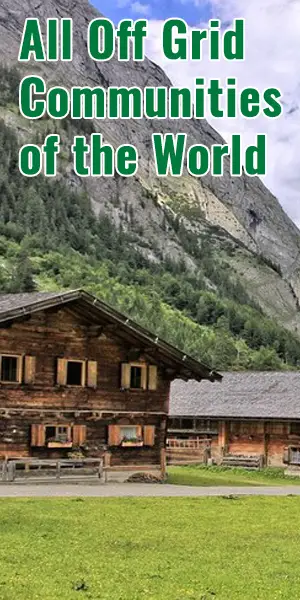
Off grid communities full#
For remote communities, connecting them to the national electricity grid is costly and full of hurdles due to inefficiency and technical difficulty. The SE4ALL initiative, which was launched in 2012 by former Secretary-General Ban Ki-moon, further estimates that 87% of people lacking electricity live in rural areas, mostly in sub-Saharan Africa and developing Asia. Indeed, even with substantial progress in rural electrification over the past three decades (reaching 73% in 2014), the rural-urban divide remains quite striking at ~23 percentage points.


PHOTO CREDIT: PETER KAPUSCINSKI/ WORLD BANKĭespite the international community’s ability to maintain, or slowly increase, urban access rates in the face of a growing global population, rural communities, disconnected from the security of modern utilities, continue to feel this strain the most. THE ROCKET STOVES ARE CLEANER AND MORE EFFICIENT, ALLOWING RESTAURANTS TO EXPAND AND SERVE MORE CUSTOMERS. IN PHOTO: A COOK PREPARES FOOD IN HER RESTAURANT ON A RECENTLY INSTALLED ROCKET STOVE ON THE SHORES OF LAKE VICTORIA IN KISUMU, KENYA. Rechargeable lamps have become a necessity to these unfortunate people and only time will tell when they will be able to avail of the power. These challenges, and the opportunities for synergies (or dangerous trade-offs) between them, can hardly be overestimated.Īccording to the 2017 Global Tracking Framework of the Sustainable Energy for All (SE4ALL) global initiative, over 1 billion people around the world are still without access to electricity though a few of these groups utilize lamps rechargeable by solar to help with the problem, while approximately 3 billion rely on polluting fuels and technologies for cooking. At the same time, the Resolution of the Assembly emphasized the importance for human communities to have access to affordable, reliable and sustainable energy (SGD 7) as a precondition for the eradication of poverty (SDG 1) due to the essential role energy plays in fostering advancements in health, education, economic development, water supply, amongst others. When the 2030 Agenda for Sustainable Development was agreed upon at the 70th Session of the United Nations General Assembly in September 2015, Heads of State and Government acknowledged climate change (dealt with in SDG 13) as one of the greatest challenges of our time, whose impacts alone can potentially undermine country efforts towards sustainable development targets.

SDG 7, SDG 13 and the Paris Agreement: the backbone of the 2030 Agenda


 0 kommentar(er)
0 kommentar(er)
